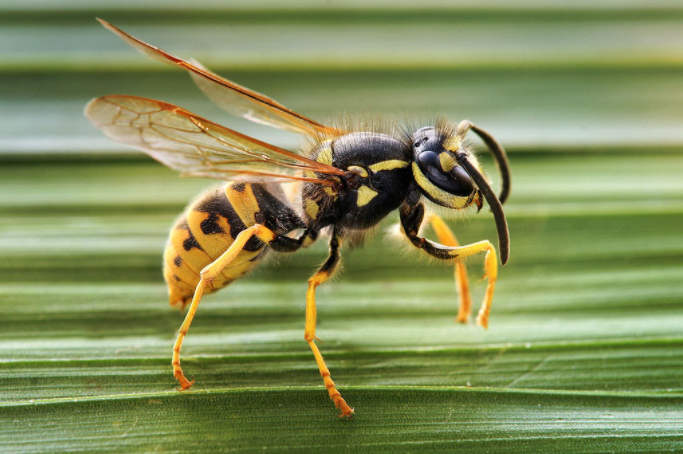Getting Rid of Yellow Jackets in Eagle
What are Yellow Jackets? Unlike many other species of stinging insects, yellow jackets are not huge pollinators, but they are still important to our ecosystem. Yellow jackets contribute to the ecosystem by feeding on and controlling populations of nuisance insects.
When yellow jackets build their nests outside in areas away from people, they are helpful and cause us little problems. However, when these pests move into our Eagle yards, they tend to cause big problems!
Yellow jackets have heads that are a combination of black and yellow with yellow and black patterned abdomens. Their abdomens slope downward from the head and have a pointed hind end with a smooth stinger. They use their stinger to defend themselves by paralyzing prey. These insects also have a set of thin, transparent wings and six thin legs that hang below their body during flight.

Yellow Jacket Frequently Asked Questions (FAQs)
Are yellow jackets dangerous?
Yellow jackets happen to be one of the most aggressive wasps, which means when living in our yards, they are dangerous. Building nests in less than opportune areas, yellow jackets make it difficult for homeowners to enjoy their outdoor space.
After coming too close to a yellow jacket nest, it is not uncommon for these pests to attack and deliver multiple, painful stings. The venom yellow jackets inject in people and our pets are strong enough to trigger allergic reactions. In those severely allergic, a yellow jacket sting can be life-threatening.
Why do I have a yellow jacket problem?
Yellow jackets are aggressive feeders, and during the summer months, they frantically forage for food to feed themselves and their developing larvae back at their nest. Adult yellow jackets feed on plant nectar and other sweet liquids. The larvae feed on proteins (insects) that the adults hunt and gather for them.
Our yards provide yellow jackets with plenty of places to nest and forage for food for both themselves and the rest of the members of the colony back at the nest.
Where will I find yellow jackets?
Yellow jackets generally nest near and under the ground and place their nests in a variety of places including:
- Under logs or within tree stumps.
- Under woodpiles, rock piles, or brush piles.
- Inside ground holes.
- In the abandoned nests of small animals.
- Under decks, porches, or shrubbery.
It is important to know that yellow jackets aren’t super picky about where they place their nests. This means yellow jacket nests can also be discovered above the ground on tree branches and in doorways. If yellow jackets find their way inside our homes, they will often build their nests in attics or behind wall voids.
How do I get rid of yellow jackets?
When it comes to yellow jackets, we know how important it is for homeowners to have them removed from their property as quickly as possible. We know you want to enjoy your outdoor space without the threat of yellow jackets.
At Averse Pest Control, we provide the fast and effective services needed to eliminate yellow jackets from Eagle properties. Our professionals will safely get rid of stinging yellow jackets. If you are experiencing trouble with yellow jackets, give us a call today, and learn why your neighbors choose Averse Pest Control for their pest control needs!
How can I prevent yellow jackets in the future?
Prevent problems with yellow jackets by partnering with Averse Pest Control and by implementing the following prevention tips:
- Remove nesting sites like fallen trees and tree stumps from your yard.
- Fill in ground holes to prevent a viable nesting area for yellow jackets.
- Place tight-fitting lids on outdoor trash cans and compost bins to limit areas in your yard where they can forage for sweets and proteins.
- Keep outdoor eating areas clean and free of food debris.
- After eating outside, quickly clean up leftovers and bring them back inside.
- When drinking sugary liquids outside, keep a lid on the cup.
- Place garden areas away from the outside of your home, and limit the amount of flowering vegetation planted in your yard, especially near your home.
- When working in garden areas, don’t wear sweet-smelling perfumes as sweet smells attract yellow jackets.
- Wear shoes when walking around in your yard to avoid suffering a yellow jacket sting if you accidentally step on one.
Quick Links
--
About Us
--
Averse Pest Control was started to give folks a smarter way to keep their homes and families protected from the pests in the Boise area; one that is safe, local, effective, fast, and service-oriented.
We're a small company, but we've gained a reputation for excellence. We'd love to earn your business!
